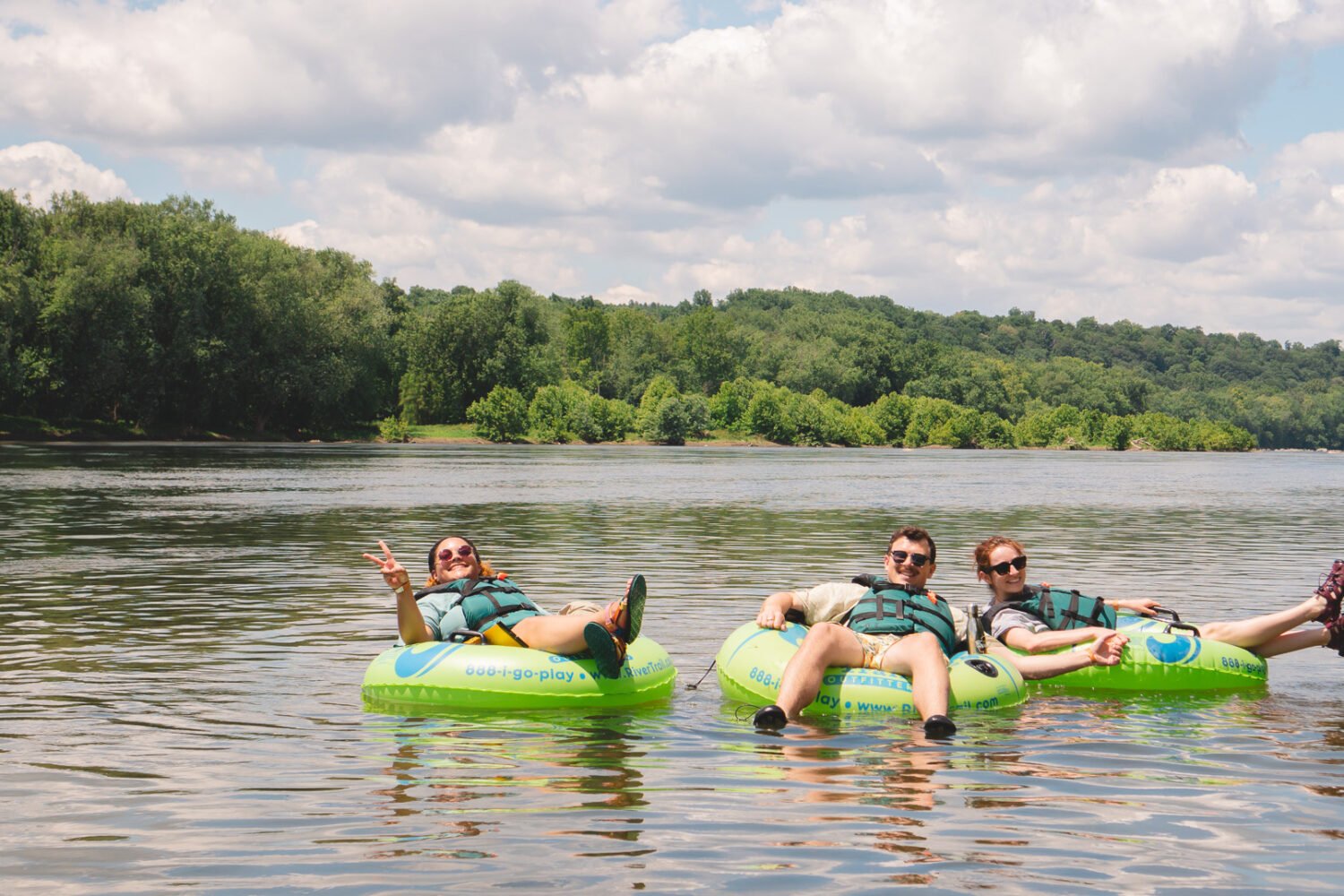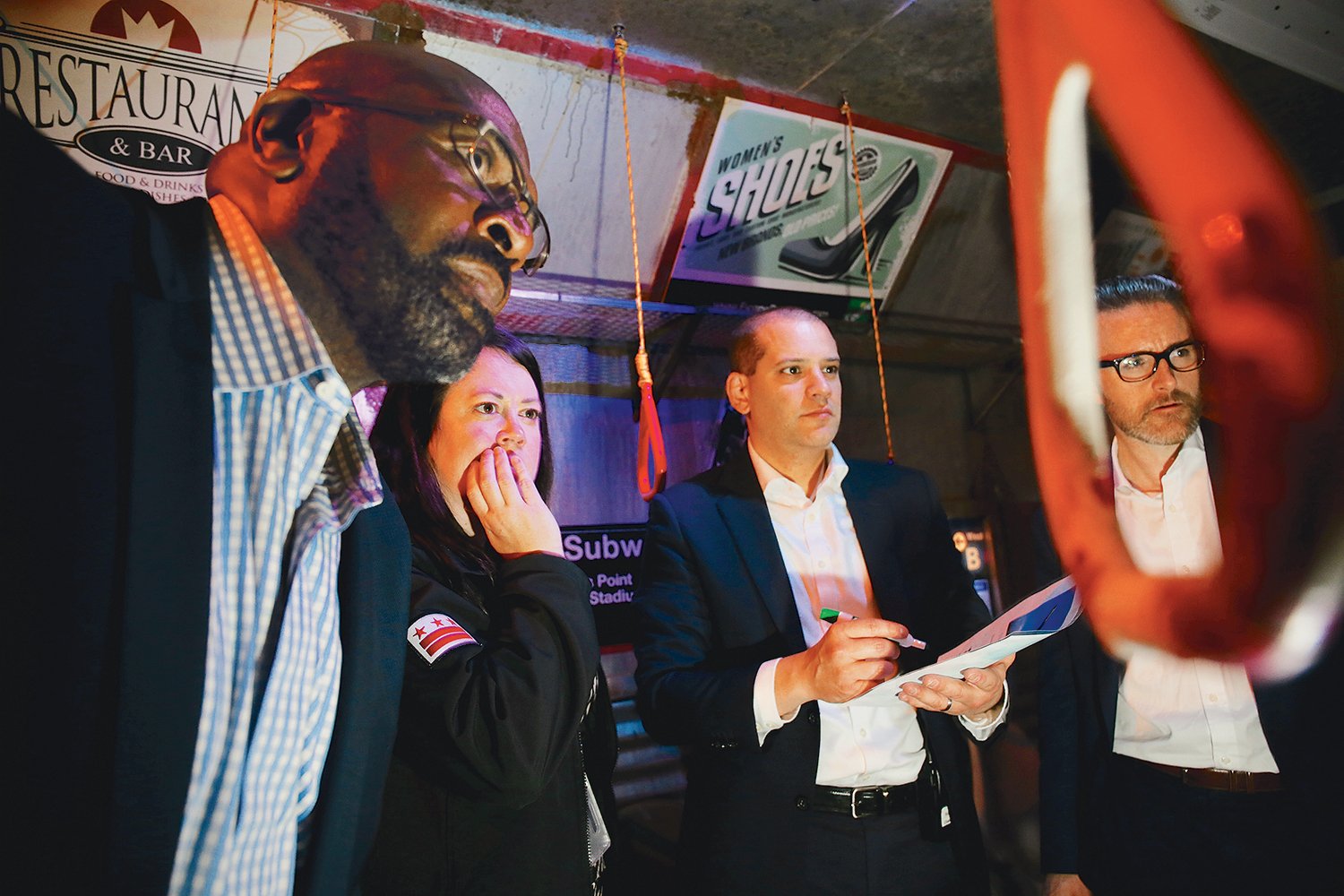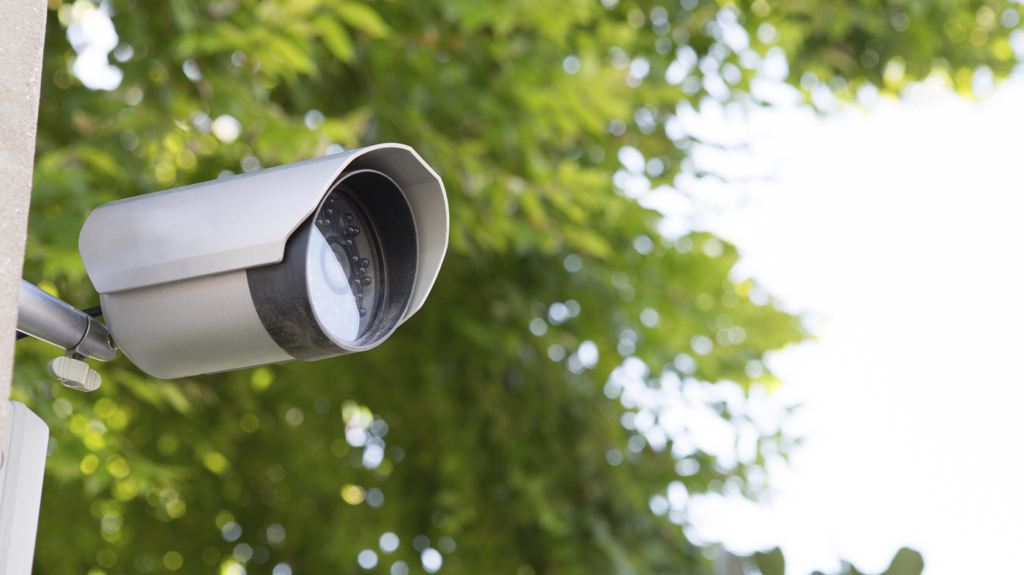The Secret Service had announced traffic restrictions would take effect inside Washington at 9 AM on Sunday morning, the day before the 57th Presidential Inauguration. And they meant it. On my way to an event on the Mall Sunday evening, I made it in a cab as far as 9th and F Streets NW before traffic came to a halt. All southbound streets were closed, and heavy trucks started moving in to install concrete barriers. The truck drivers had to do double duty directing mystified drivers to turn around and go the other way.
The beginning of the Inaugural security zone was clearly marked by this screening station.
“Please open your outer garments,” a sign advised Inauguration attendees. I shuddered a bit and buttoned up my coat. (Temperatures this morning were around freezing.)
Elsewhere, city buses would be turned into bomb barricades as security agencies prepared for the morning crowd, which city officials estimate will be at least 500,000-people strong.
Near Pennsylvania Avenue, the parade route, some of the most valuable facilities were being installed.
You won’t find many places to take relief along the parade route. Pennsylvania Avenue may be the most protected, and restricted, stretch of road in the world on Monday morning.
But last night, Downtown Washington was mostly free of pedestrians and was transformed by the absence of vehicular traffic. I stood in the middle of Pennsylvania Ave., usually bustling with cars, and stared at the brightly lit Capitol draped in American flags. Downtown felt like some open-air museum, a gallery of buildings and national landmarks. I felt like a visitor let in after closing time.
Partygoers and tourists posed for photographs in front of the facade of the National Gallery of Art and tried to snap shots of the gleaming white Capitol in the distance. The police officers idling in cruisers at every intersection along America’s Main Street didn’t seem to regard anyone as a particular threat.
The Mall itself was eerily quiet. On a broad expense next to the Air and Space Museum, a lone security guard in a bright yellow jacket ambled slowly, his hands in his pockets. Tomorrow, tens of thousands of onlookers would fight for a good spot. Tonight, it was just the guard and his charge–a huge video screen waiting to be set up for the next day’s events.
Getting out of downtown wasn’t much easier than getting in. Police motorcycles and cruisers blocked most entrances to the areas main arteries, Independence and Constitution Avenues, which were restricted to outbound traffic only. The skies above seemed mostly quiet, though by tomorrow they’d be buzzing with Coast Guard helicopters and Air Force jets. For one evening, though, despite the bewildering array of barriers and blockades, there was a rare moment of quiet in the nation’s capital, before a very big storm.


-thumb-400x300-49355.jpg)
-thumb-400x300-49359.jpg)







